It has been an unusually good year for Trumpeter Swans (but a poor year for irruptives). As a result, the opportunity has arisen to catch the trumpeters in less common situations. In this case, it was face-on activities.
Some of the Trumpeter Swans before they took to the air.
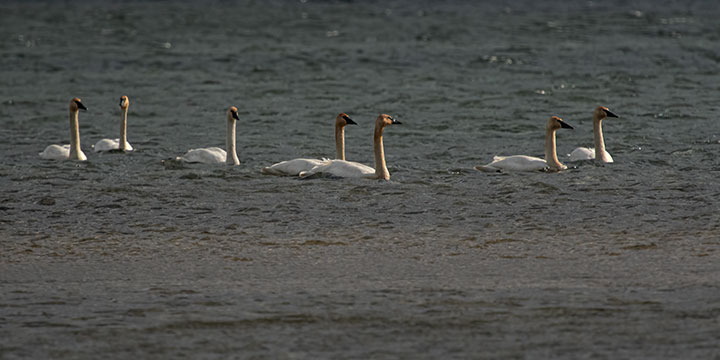
The trumpeter is the heaviest bird in North America. So unlike some lighter waterfowl, it cannot just spring into the air to start flying. It must run for 90 metres or more across the water to pick up speed. Here can be seen the separate splashes made by the alternate feet pushing against the water as it runs.
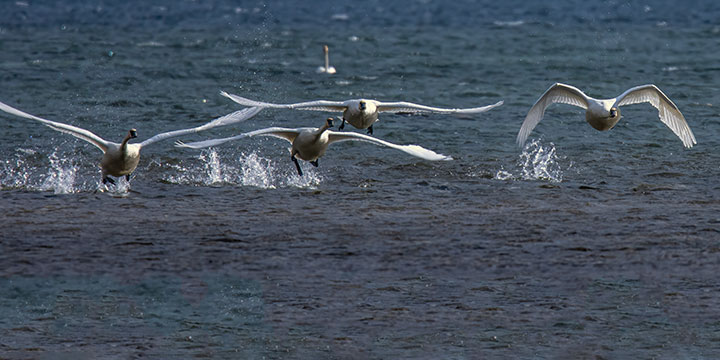
Two photographs in sequence show a Trumpeter Swan running across the water straight towards the photographer.
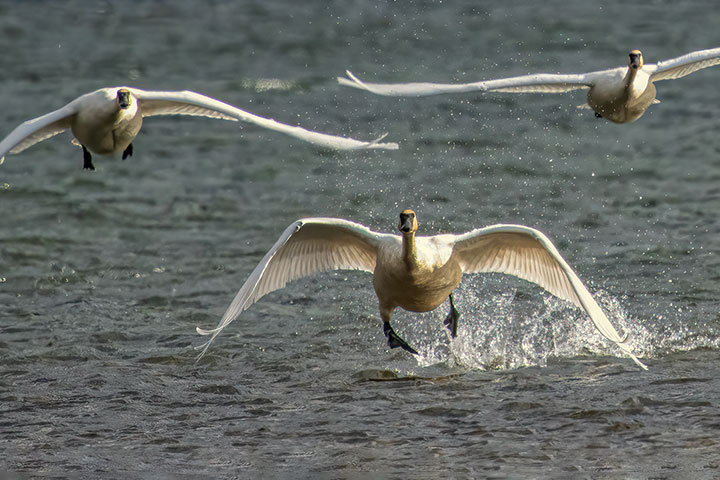
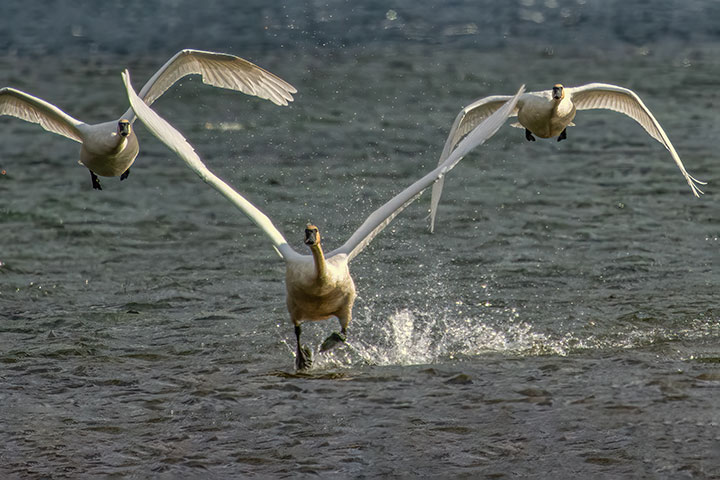
When flying, the feet are tucked up out of the airstream.
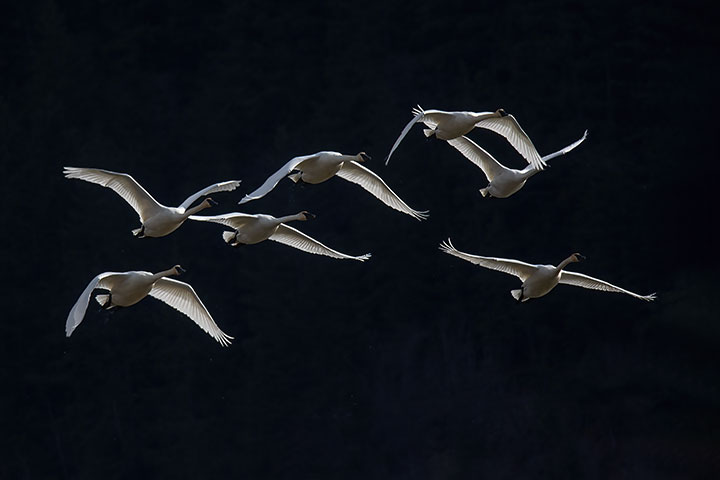
But when coming in for a landing the feet are lowered to provide drag to slow the bird.
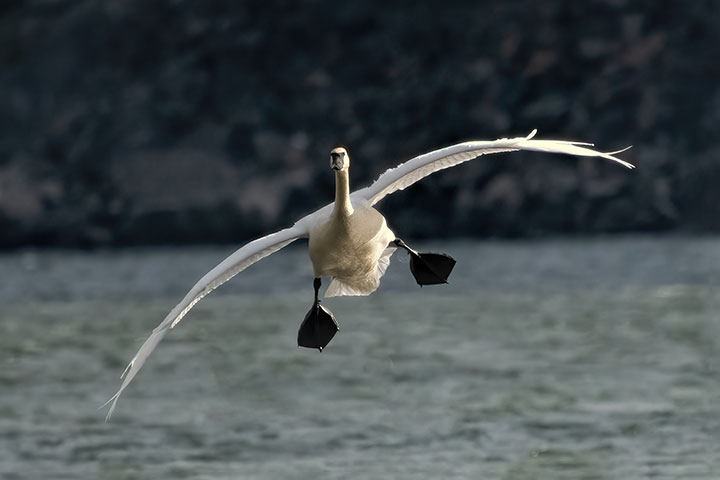
At the last moment, the feet are rotated to provide a break on the water.
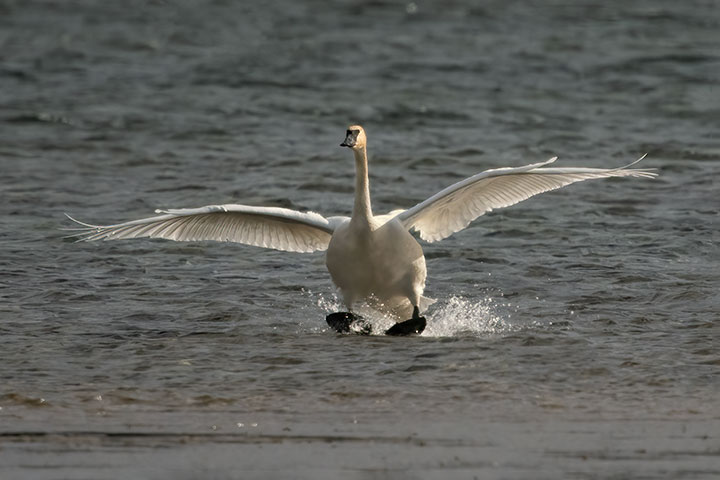

Those are great pictures.
That’s how planes learned to land.
Great shots and explanation. Thanks!
The shot with the black background is stunning. Thank you for these beautiful images. We are hoping to get up to the Lemon Creek are soon to see the swans.
Spectacular photos and explanations of the details which make what they do so relatable.These heaviest of all birds have become my favorites this winter through your posts. Thank you.
Many thanks for these face-on action views!
So amazing to see the flight broken down so that we can understand it!
It’s been a great bird time for us lately, as we have had a huge flock (looked like several hundreds) of cedar waxwings doing the murmuration fly -through our yard for several days in a row, with lots of dips and turns in front of our windows!
That’s so interesting – 90 meters! That’s just over 300 feet. What a lot of energy that would take.
Thank you.
Great breakdown of the flight mechanism of these wonderful birds. We get a different breed of swan in the Fraser Valley, and they fill the farm fields every winter. A wonderful sight.
I really enjoyed this post, the explanation and the beautiful photographs to demonstrate. Thank you.